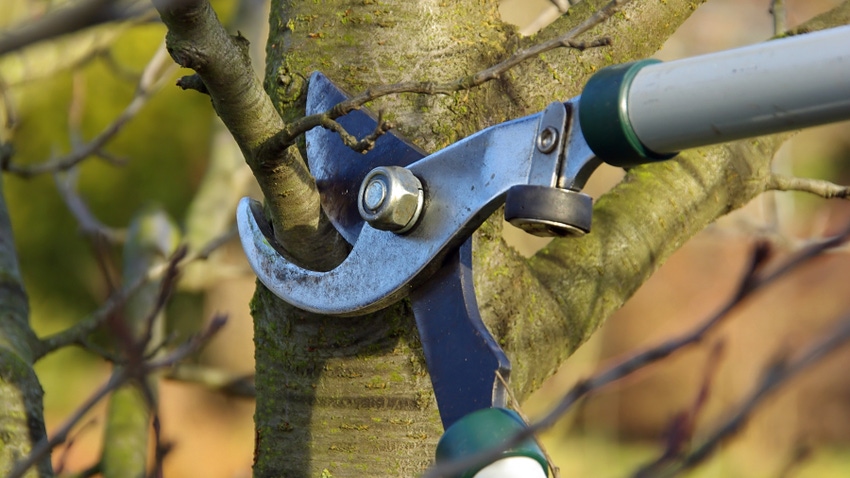November 28, 2023

by Elizabeth Exstrom
When should I prune my trees and shrubs around the farm? Pruning is a science, but it doesn’t have to be intimidating. There are some guidelines that act as a starting point that make pruning a bit easier.
Having a little knowledge of the plant you are pruning will help in the process and give you wonderful looking plants.
The first step to pruning is surveying the plant. This will determine whether pruning is needed. Look for and remove any dead, diseased, damaged, rubbing or crossing branches first. Remove suckers, little saplings at the base of the tree, and water sprouts and small vertical stems on the main branches.
Also, look at the plant in terms of safety. Be sure the plant is not blocking vehicle sightlines or covering sidewalks or roads. Remove any low-hanging branches that are hanging over those pathways.
YOU MIGHT ALSO LIKE: 18 Gifts for the farmer on your list
Plant pruning tips
Here are some specific pruning tips for various types of trees and shrubs:
Deciduous shade trees. It was previously recommended that the best time to prune most shade trees was during winter dormancy. New research shows the optimum time to prune living branches is late spring and early summer because pruning at this time promotes the quickest sealing of pruning wounds, known as compartmentalization of decay in trees, or CODIT.
Late spring and early summer are when tree cells are most active during the growing season. Hence, sealing occurs the quickest. Winter, or anytime during the dormant season, has commonly been the recommended time in the past to prune shade trees because branching structure is more visible at that time.
Anything dead, damaged or diseased can be pruned at any time of year. After a wind or ice storm, broken branches need to be removed for safety. Pruning of large branches in large trees should be left to professionals.
Evergreen trees. Evergreens keep their leaves throughout the winter. Pine trees rarely need to be pruned. If you choose to do so, it is best done June into July, or when the new growth is between half and fully grown. If pine trees are pruned too early, the tree could be deformed. Pruning too late could cause the tree to be stunted.
Be sure to prune only the current year's growth. If the trees are pruned too far back onto older growth, new growth will be delayed a year. Spruce and fir also are two evergreen trees that rarely need pruning. If pruning is needed, they can be pruned between November and April.
Evergreen shrubs. These shrubs — such as arborvitae, Japanese yew and juniper — are best pruned in late winter between November and April. The cuts will heal quickly and will be covered by new growth.
Deciduous shrubs. Pruning depends on blooming time. If the shrub blooms in the spring, before June 15, wait to prune until after it flowers. Lilac, forsythia and dogwoods are considered spring bloomers. If the shrub is a summer bloomer — such as a potentilla, flowering quince or privet — then late winter to early spring is the best time to prune.
With a little science, the art of pruning can be decoded to yield healthy, happy plants.
Exstrom is a Nebraska Extension horticulture educator, based in Hall County.
Please email your farmstead landscaping, turf, forestry or gardening questions to [email protected].
Read more about:
PruningYou May Also Like




